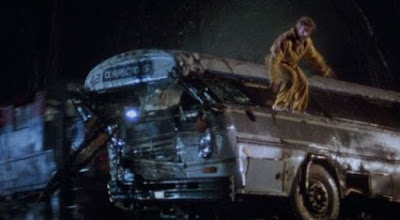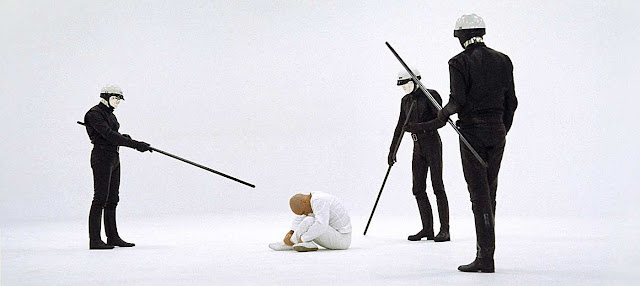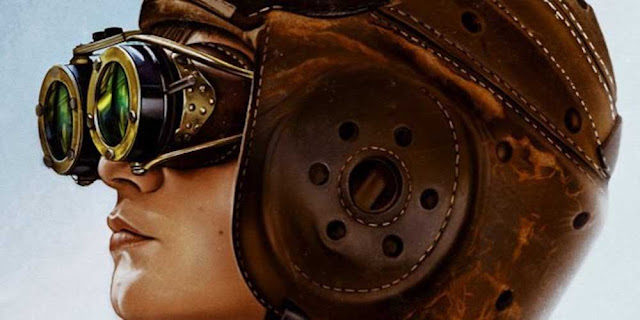I admit it: it’s a clickbaity title but work with me here. This week the issue of book-to-film rights popped up on the boards of the Short Mystery Fiction Society, and it nudged me to think about the specifics of deals I’ve been privy to.Authors dream of Hollywood deals because we assume they lead to big money. Granted, everyone’s idea of big money differs, but I venture to say that these days those fantasies involve six zeroes.
I have in my possession an interesting document that confirms the fantasy is possible. Don’t ask me how I got the doc, which pertains not to one of my ghostwriting clients’ books, nor my wife’s, and certainly not one of mine. Suffice to say someone just got sloppy.
Let’s preface this by saying I’m not a lawyer, agent, or hotshot writer. But I do think that the publishing and film industries like keeping writers in the dark about how much their work is worth. So if someone was stupid enough to slip me a doc, I figure it’s okay to share, provided I don’t identify the people involved.
The document is a response to a studio option offer for a book written by a young writer who, at the time the 2024 document was written, was already a No. 1 New York Times bestselling author in one genre. This deal was for the person’s debut in another genre, which will be pubbed in 2025. No, I am not acquainted with the writer.
A year ago, the still-to-be-pubbed book must have been considered “hot,” whatever the hell that means these days, because in the push-back document the author’s book-to-film agent believed that they could get $150,000 for a 12-month initial option, with a renewal at the same rate and length. An option is the money a production company or studio pays a writer to have the exclusive rights to a work (for a fixed period of time) while the studio attempts to get the film greenlit. When talking about options, agents focus on several deal points such as:
Initial option: How much the studio or production company will pay the author to exercise their option on the work (story or book), over how much time.
Purchase price: How much they will pay if/when the work is turned into a film or TV show.
Royalty: How they will pay per episode if the work is turned into an episodic TV show.
Backend: How much the author will participate in the gross profits of the resulting filmed project.
These are just the basics. There are a litany of other points, from the onscreen credit the author will receive, the rights the author will reserve to the project, all the way to how much creative control the author will be allowed to have on the final product, not to mention travel perks, etc.
The options I’ve seen for my ghostwriting clients, my author friends, and my wife involve a payment for a term lasting one to two years, usually with a built-in renewal clause with payments at the same rate or slightly higher. It’s safe to say that of all the contracts I’ve been involved with, I’ve never seen figures as high as the ones in this document. And yes, I’m a newb in this world.
Back to the doc in hand. If the opposing side accepted the agent’s counter, the author would earn $300,000 on the option over two years. If the production happened, the author would be paid a purchase price of $1.5 million. Already we’re at $1.8 million. This fits our six-zero dream nicely.
Remember, this is a counter-offer, so in a way it represents the agent’s wish list for the author’s book. I don’t think the agent would have been throwing around such figures if they didn’t think it was feasible. The purchase price figure seems designed to arrive at $1 million after the lawyers get involved.
In this particular document, that $1.5 million figure is thrown out as if it covers all types of productions. The memos and contracts I’ve seen tend to break out different purchase prices for, say, cable or network TV productions, major motion pictures, limited series, etc. I assume the agent wanted to send a message to the opposing side that they wouldn’t get the license for this book cheaply.
Not every literary agent has the credentials to sell their clients’ work to Hollywood. So they partner up with a book-to-film agent, who has the track record and contacts. The book-to-film agents I’ve met appear to practice the Spaghetti + Wall method of promotion. They email a glowing pitch letter with attached manuscripts or book proposals to studio heads and production companies they think might be interested, then sit back and wait.
They don’t pick up a phone to verbally pitch a damn thing—i.e., “work”—unless something in the news has suddenly made a project “hot.” (Yes, there’s that stupid word again.) Like literary agents, book-to-film agents don’t have to sell your book to make a living. They just have to sell a book. But if a name director, producer, or actor has read or heard about a book or story, then the agents can sit back, field offers, and play each bidder against the other.
Side note: My favorite movie scene of a talent agent defending his existence…
There’s always stupid additional money and perks involved in the deals these agents lock down for authors. If the book I’m discussing gets turned into a TV series, the author would theoretically be paid $7,500 per episode as a royalty, $25,000 per episode as befits the author’s proposed non-writing executive producer (NWEP) credit. (This is why everyone wants to be an executive producer.) The author will also earn a percentage of the modified adjusted gross receipts (MAGR), which is the “backend” in the laundry list above. What’s more, this particular author will be allowed to offer “meaningful consultation on all creative decisions” and be able to participate in the writers’ room if the work is turned into a TV show.
As written, every thing on this sheet of paper is a sweet deal, and I hope the writer got what the agent proposed, or close to it.
We have not discussed the impact this production will likely have on the author’s book, which, let’s remember, has not been published yet but will soon. With the kind of exposure a TV show or film is likely to generate, the book will no doubt sell phenomenally well, which is every writer’s dream.
That is the whole point of a print project going Hollywood. Movies and TV shows raise the visibility of books and authors, and have since the first moviegoer walked out of a theater hoping to snag a hard copy of Gone With the Wind. I would not have read Wicked without hearing about and later seeing the Broadway play. I’m a Baum fan from childhood, which is why I won’t be seeing the movie. Two versions of that story was enough.
So yeah—a Hollywood deal is sweet, which is why everyone wants one. It’s wonderful to have a piece of paper detailing such a juicy option in your hands—or even a complete stranger’s—except that none of it may ever come true.
Most books are never optioned by Hollywood. And the ones that are are rarely made. Notice how many times I have used the word if in discussing everything up to now. As you may have surmised from my headline, I am here to argue that sometimes it’s perfectly okay if an optioned piece of writing never gets made into a movie.
My premise is based on the experience of a friend who started in journalism and later switched to writing narrative nonfiction books. (That’s code for history that doesn’t suck.) All but one of his titles have been New York Times bestsellers. None have been made into movies. His big breakout book sold modestly in hardcover but hit its stride in paperback, when—goes the publishing biz theory—it was eagerly gobbled up by book clubbers who wanted to read a real-life story that “read like a novel.”
Decades later, his breakout book still hasn’t been made into a movie, despite being optioned way back in the early 2000s, and having a revolving door’s worth of name actors, directors, and producers attached to it over the ensuing years.
The writers I know who have accepted modest options on their books typically pocketed $5,000 every six months for terms that lasted 12, 18, or 24 months. Yes, that’s a small dollar figure—only three zeroes—compared to the sweet numbers and perks I detailed above, but it’s real money. The rest is so hypothetical you cannot bank on it. When you sign that contract, the option money is the only thing that’s real. Just like advance money is the only cash you’re guaranteed to receive when you sign a book contract. Royalties, if they happen, are gravy.
The most money any one of my short stories has earned—with reprints—in its lifetime is $1,220. Who am I to sneeze at a semiannual payment that is 409 percent higher?
I hope you are not reading this thinking, “Oh sure, that’s all well and good for novelists. I’m a short story writer. No one’s ever going to pay me that kind of money.”
Slap yourself upside the head right now. The films All About Eve, It’s a Wonderful Life, Arrival and tons more all started life as short stories. I am not even bothering to Google a list of the bajillion more examples that surely exist. Okay, I lied. And look at me—I keep lying. (However, in the comments, please chime in with the names of other films. I think it will warm all our hearts.) [EDIT: The day after this post appeared, fellow SleuthSayer John M. Floyd posted an entire article on short stories that became movies. See it right here!]
The real issue is learning a) to keep doing good work, and b) to be happy with so-called “small” paydays. Option only a few stories and those four-figure checks can provide an enviable income that will help you create more work. Perhaps a more accurate headline for this article might be “Getting Rich $5,000 at a Time.”
I guess the question is how you trigger that gravy train by getting your work optioned. I have seen numerous articles for writers that touch on this, and I’m sure you have too. Articles that tell you to, say, mail your work to actors and directors whose work you adore. (Don’t. I’ll explain why one of these days.) Other articles tell you to attend “pitchfests” to drum up interest in your work. (I hate talking to people, so don’t look for me at one of those things.)
Two movies I enjoyed got their start as quite obscure books. So far as I can tell, The Descendants hit the bestseller list for the first time after the George Clooney film hit theaters in November 2011. The Prestige, a marvelous science fiction novel by the late Christopher Priest, has won a respectable number of genre awards but I venture to say most of us who’ve read it did so after catching the Nolan Bros. film.
Each of these books were brought to the attention of their directors by book-to-film agents. What pushed those directors to take notice was the endorsement of someone in their circle who had read the books and loved them.
It sounds like something out of the realm of fantasy, doesn’t it? People who read books! In Hollywood! But it happens.
A producer I won’t identify used to keep an apartment in Florida so he could visit his son from a previous marriage. One morning, while riding down in the elevator of this condo building, he spied a poster for a book club meeting where attendees were slated to discuss a nonfiction book published a few years earlier. He wrote down the name of the book, bought it, read it, and later called my wife’s literary agent hoping to work out a deal.
“Wait,” I said the first time I met him. “You really read the book?”
“Cover to cover. Why, you wanna quiz me?”
Next time, if I get permission, I will share the details of a book-to-film contract.
See you in three weeks.
Joe



.jpg)
























